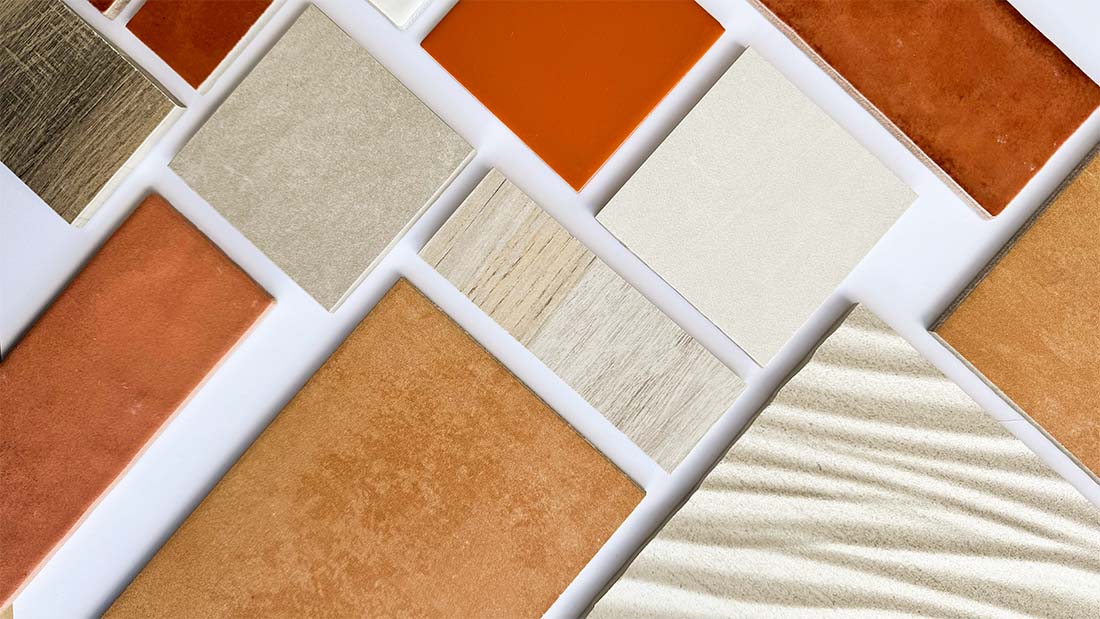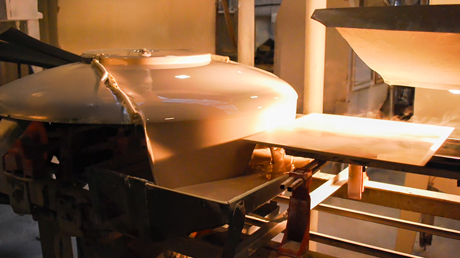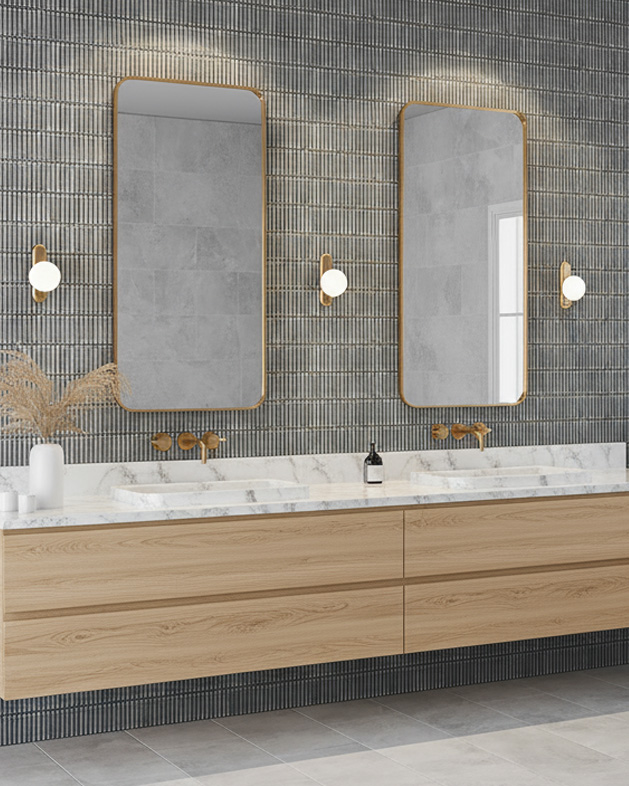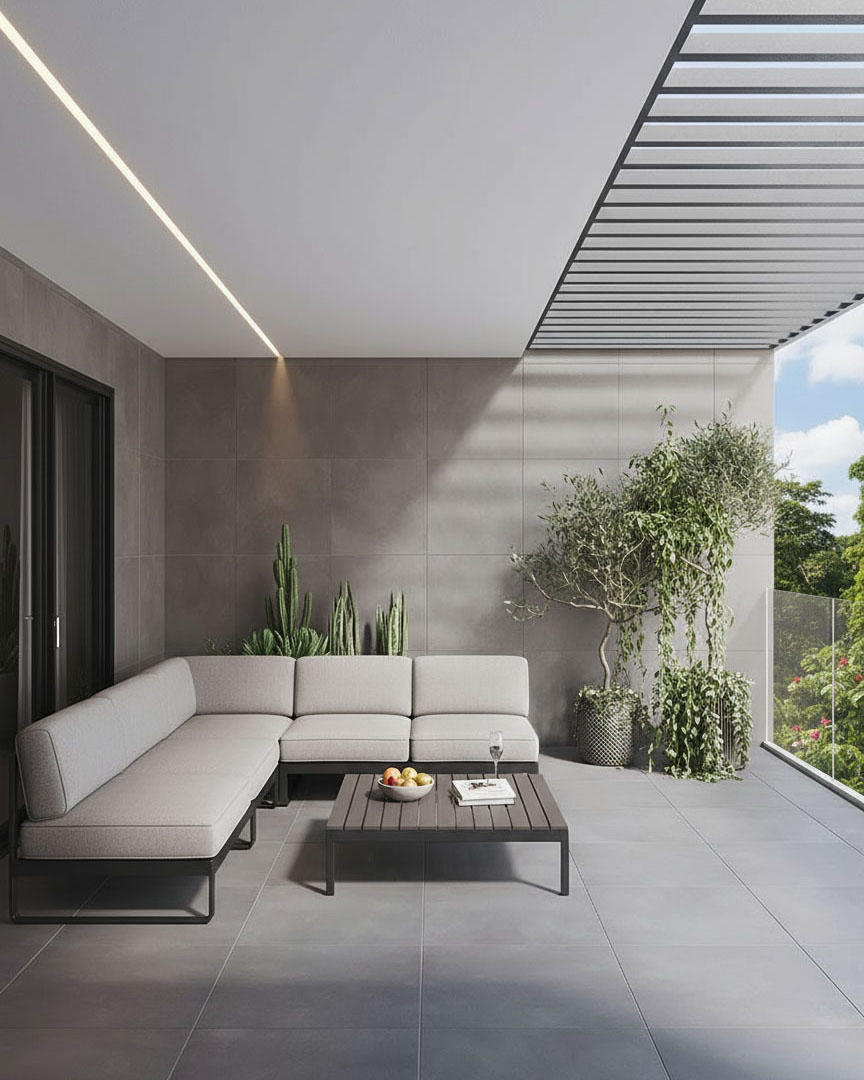7 October 2025
Two of the most popular choices for Australian homes and commercial spaces are ceramic and porcelain tiles. But how do you tell the difference when comparing ceramic vs porcelain tiles? And what’s the right option for you?
While they may look similar, a side-by-side comparison of ceramic and porcelain tiles reveals the variations in performance, durability and ideal applications. This article will compare how each tile is made, its strengths, water resistance, design options, cost, and how to decide which is right for your project.
At a glance:
- Ceramic tiles: A durable, cost-effective tile that offers excellent design flexibility.
- Porcelain tiles: Fired at higher temperatures in the manufacturing process, porcelain tiles are harder, and less porous than ceramic.
| Ceramic Tiles | Porcelain Tiles | |
|---|---|---|
| Durability | Good for use on walls and floors with low traffic (residential spaces). | Good for use on walls and floors with low/high traffic (residential or commercial spaces). |
| Water resistance | A higher water absorption than porcelain. Recommended for indoor areas. | Highly water resistant. Suitable for most applications, including but not limited to wet areas and outdoor spaces. |
| Ease of installation | Easy to cut. Recommended for DIY. | Harder to cut. Professional installation is preferable. |
| Price | Cost effective. | Generally, more expensive than ceramic. |

How Tiles Are Made and Used
Both ceramic and porcelain tiles are made from similar natural materials such as clay, quartz, and feldspar. The main difference lies in how these materials are refined and processed. Porcelain tiles are crafted using finer, more purified ingredients, which are then pressed and fired at much higher temperatures than ceramic tiles. This process creates a tile that is denser, less porous, and more durable. This aids in the creation of various sized porcelain tiles, including large format tiles and outdoor pavers.
Because of this, porcelain tiles are highly resistant to moisture, stains, and wear—making them ideal for high-traffic areas, bathrooms, outdoor spaces and commercial applications. Ceramic tiles, on the other hand, are most used for walls, splash backs, decorative walls, and areas with light to moderate foot traffic. Ceramic tiles are affordable and have a wide variety of styles available. Due to their softer nature (compared to porcelain), they are easier to cut and install, making them very suitable for DIY projects.
In short, both materials offer beauty and versatility—porcelain delivers superior strength and performance, while ceramic provides great value and design flexibility.


Aesthetic Choices: Styles, Finishes, and Looks
Fortunately for homeowners, there’s considerable design versatility available for both materials.
- Ceramic tiles offer a wide range of colours, patterns and glazes. This makes them perfect for decorative walls or to help statement features stand out.
- Thanks to advanced printing technology, porcelain can now replicate the look of natural stone, timber or concrete with incredible realism.
Today, ceramic or porcelain tiles can suit a wide range of designs, including but not limited to; contemporary, classic, and rustic designs. Although ceramic tiles stand out due to their design versatility, porcelain tiles do still offer beautiful designs, however tend to focus on premium finishes.. Explore Johnson Tiles’ collection, showcasing our extensive range of matt, gloss, lappato and textured tiles. Johnson Tiles also offers a wide range of aesthetics including but not limited to, stone-look tiles, concrete-look tiles and timber-look tiles to suit your design preferences.
Cost Considerations: Ceramic vs Porcelain
What are the typical cost differences between ceramic and porcelain tiles? If you’re on a budget, ceramic is a stylish go-to option because it’s usually more affordable. Porcelain is more expensive due to its higher density and complex production process.
For homeowners planning a renovation, are you looking for upfront savings or a long-term investment? Although porcelain tiles are generally more expensive, they may require fewer replacements in the long run due to their exceptional durability. On the other hand, the affordability of ceramic tiles can provide more flexibility for aesthetic updates if you wish to replace the existing tiles with newer trends in the future.
Ceramic or Porcelain: Which Should You Choose?
Whether you’re a homeowner or a designer, here’s an overview of the main features when considering ceramic vs porcelain tiles:
- Choose Ceramic for its affordable pricing, easier installation (especially for DIY), and design flexibility with various patterns and styles. Ceramic tiles are great for walls, low-traffic floors, and decorative projects.
- Choose Porcelain for its durability, low water absorption and long-term performance. It’s ideal for wet areas such as bathrooms and laundries, outdoor areas, and commercial spaces.
Need help matching a tile type to your project needs? Johnson Tiles is the go-to expert, with a wide range of ceramic and porcelain options suited to Australian homes and lifestyles.


Find the Right Tile with Johnson Tiles
When deciding between ceramic and porcelain tiles for your next project, consider the unique benefits of each. The choice depends on your budget, desired style and overall suitability for wet, dry or heavy-traffic areas. With over 60 years of experience in Australia, Johnson Tiles has the expertise, and our extensive tile collections will cater to your every need and desire.
Visit our nearest showroom today or explore this website to compare ceramic and porcelain options and receive expert advice for your renovation or new build.


